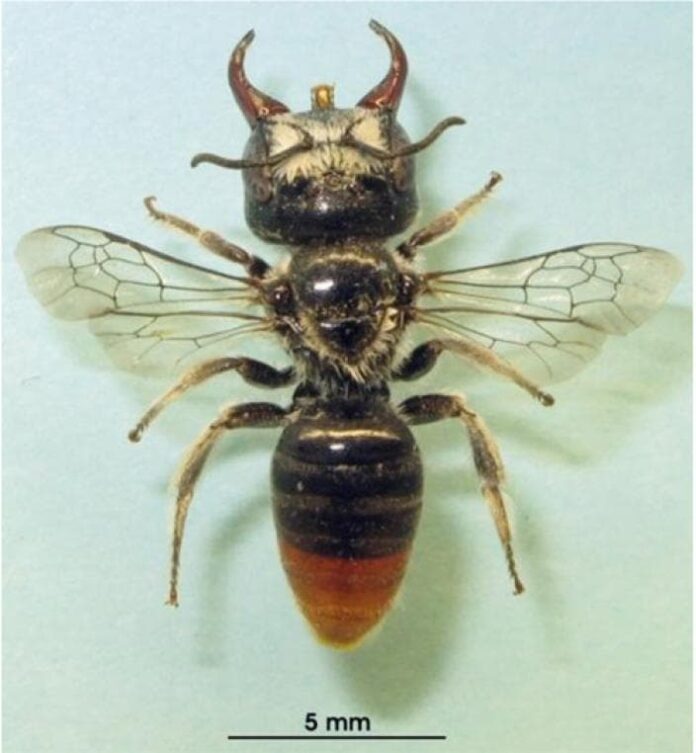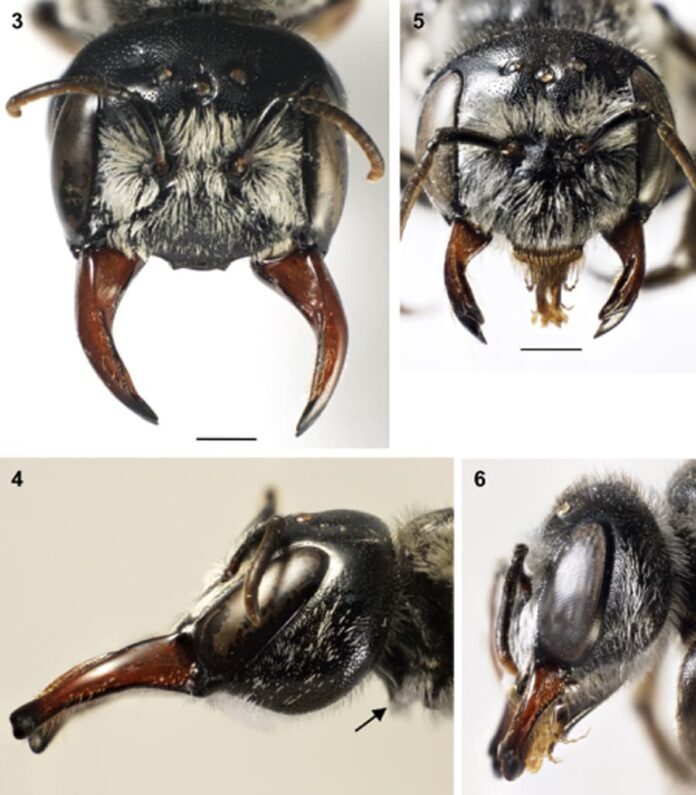Nature never fails to surprise us, the megamouth bee is everything true to its name. You know how you learn about animals you have never heard of before, and they keep getting weirder and weirder? The megamouth bee is a prime example of one. Though there is not a lot of information about them, I managed just to get enough basic. Feel free to check out below.
1Appearance

A megamouth bee has a similar size to a honeybee, and it has a black body and a bright orange-red abdomen. Partial of its body and legs are covered with some white hair, and it has 4 clear wings. The bee has a round head that is disproportionately large, with males having enlarged fierce-looking jaws. Females of this species do not have large mandibles like males at all.
2Behavior
Megamouth bees are solitary, but they will come together to breed. The sweetest part is that the male will guard the burrow when the female is busy constructing brood cells. A male megamouth bee’s large head and mouth have the use for repelling other males. It stations itself just below the burrow entrance looking upward because a male megamouth bee only mates with one female. Though unsure, a male may also mate with the female repeatedly to ensure successful fertilization. Besides keeping other males from entering the burrow, he may also deter parasitic insects from harming the female and brood.
The female spends a lot of time in the burrow and tends to her eggs. Only she can enter and leave the burrow as the male does not let anything else in at all. A male will fly and stop to inspect the nest and occasionally enter it before patrolling the burrow again. The burrow is in a dry area where pollen-laden females collect food and males fly close to the ground surface.
3Discovery
In December 2020, Dr. Terry Houston, Western Australian Museum’s Curator of Insects, and Mr. Otto Mueller who was a museum volunteer found this strange bee when they were looking for endangered bee species. They were in Perth CBD scouring the bushland when they saw an insect entering a hole in the ground. So far, there is not enough information about them yet so that is all we have now.
Related Post: Things You Don’t Know About Vulture Bees




